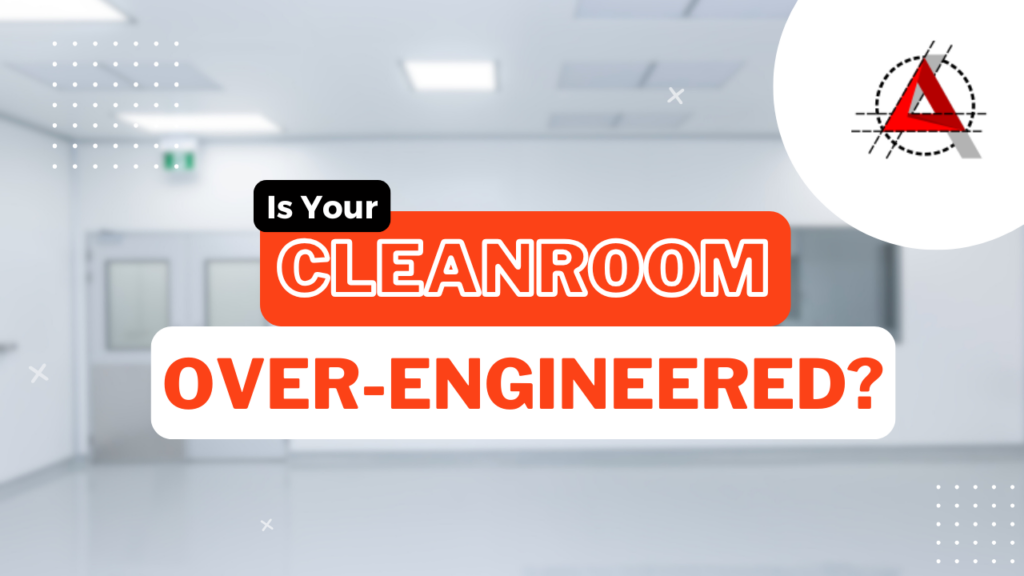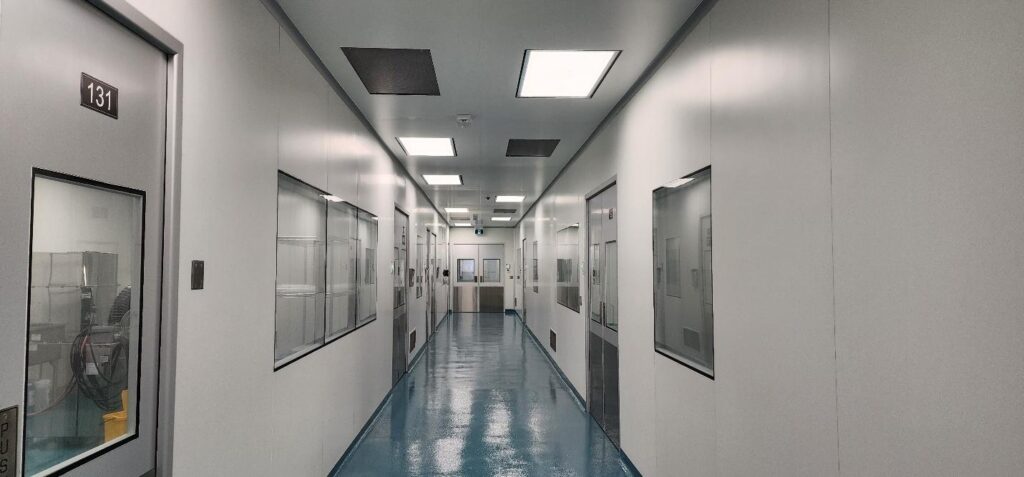Is Your Cleanroom Over-Engineered?

Cleanrooms are necessary in sectors like biotechnology, semiconductor manufacturing, and pharmaceuticals where contamination control is key. But when it comes to cleanroom design, there is a common assumption that higher is always better. Higher ISO classifications, tighter tolerances, and more air changes may sound like a good idea, but they can also result in over-engineering, which adds needless complexity and expense without improving performance.
So, how can you make sure your cleanroom is meticulously designed to satisfy all legal criteria while remaining affordable? Let’s explore.
What Does Over-Engineering a Cleanroom Look Like?
Often, over-engineered cleanrooms consist of:
- Excessive high ISO classifications: Higher operating and maintenance costs result from aiming for ISO 5 when ISO 7 would be adequate.
- Oversized air changes per hour (ACPH): Performing more air changes than necessary stresses the HVAC system needlessly and uses more energy.
- An excessive number of HEPA filters: Although filtration is important, excessive use can put stress on airflow systems and raise maintenance costs without providing any actual advantages.
- Overly complicated automation and monitoring systems: While sophisticated monitoring is crucial, an overabundance of sensors and controls may make the system challenging to operate.
- Overly stringent environmental controls: Stricter than necessary humidity and temperature regulations can increase energy expenses without enhancing results.
How to Avoid Over-Engineering in Cleanroom Design Optimization
A balanced cleanroom satisfies operating requirements, complies with regulations, and is still economical. Here is how to strike this equilibrium:
Define Your Cleanroom’s True Requirements (URS Development)
A common error in cleanroom design is to choose an ISO classification that is more stringent than is required. Cleaning standards are unique to each process and sector and going above and beyond doesn’t necessarily result in benefits.
For example:
- Depending on the procedure, a pharmaceutical compounding factory usually needs ISO 7 or ISO 8.
- Unless working with extremely delicate microchips, semiconductor production may require ISO 5 or ISO 6.
- Cleanrooms used for food processing are typically in the ISO 7–ISO 8 range, where high levels of filtration are not required.
Understanding these classifications helps avoid over-specifying cleanroom requirements, leading to more efficient and cost-effective designs.

Optimize Airflow and Filtration
Airflow design is crucial for cleanroom performance, but more air changes per hour do not always mean better cleanliness. Instead, excessive air changes can:
- Increase energy consumption unnecessarily.
- Overload HVAC systems, leading to higher maintenance costs.
- Create turbulence that can disturb airflow patterns, making contamination control less effective.
The right ACPH depends on the cleanroom class:
- ISO 8: Typically requires 10-25 air changes per hour.
- ISO 7: 30-60 air changes per hour.
- ISO 6: 90-180 air changes per hour.
- ISO 5 and below: Significantly higher but must be calculated based on process needs.
Using computational fluid dynamics (CFD) simulations during design can help optimize airflow, ensuring efficiency without over-engineering.
In these cases, it’s important for the design team to highlight the compliance standards that must be adhered to. By ensuring that the customer understands the regulatory framework that governs cleanroom design, the URS can be optimized to meet both the regulatory and functional requirements while avoiding unnecessary additions.
Choose Smart Materials and Modular Solutions:
Selecting the right materials is another way to prevent over-engineering. Instead of using the most expensive construction methods, consider:
- Modular cleanroom panels – These offer flexibility, easy installation, and cost-effectiveness compared to traditional construction.
- Walkable vs. non-walkable ceilings – When maintenance access is not frequently required, installing a walkable ceiling increases additional expense.
Businesses can lower upfront expenses while maintaining flexibility for future expansions or alterations by utilizing modular cleanroom components.
Streamline Automation and Monitoring
Environmental monitoring systems (EMS) are necessary in cleanrooms to monitor variables such as temperature, pressure differentials, humidity, and particle count. But including extra sensors and controllers can result in:
- Higher installation and maintenance costs.
- Complex troubleshooting and validation processes.
- Unmanageable amounts of data without meaningful insights.
Instead, focus on the critical control points that directly impact cleanroom performance. A well-designed, properly validated EMS can help maintain compliance without excessive complexity.
Balance Performance with Maintainability
An over-engineered cleanroom might perform well initially but become a maintenance burden over time. Overcomplicated designs can lead to:
- Difficult-to-reach filters and components that increase downtime.
- Excessive cleaning requirements due to unnecessary surfaces and structures.
- High energy consumption, leading to long-term operational inefficiencies.
Without making the design too complicated, a well-designed cleanroom should put an emphasis on sustainable operation, easy maintenance, and effective cleaning.
The Takeaway: Cleanroom Design Should Be Smart, Not Just Expensive
Increased expenses and complexity are the sole results of over-engineering a cleanroom; improved performance is not guaranteed. A cleanroom’s success depends on finding the ideal balance between efficiency, performance, and compliance.
You may create a cleanroom that produces results without unnecessary expenses by concentrating on the real needs, optimizing airflow, employing intelligent materials, streamlining monitoring, and designing with ease of maintenance in mind.
Need Expert Guidance?
Our specialty at ACH-A Cleanroom Hub is creating cost-effective, efficient, and compliance cleanroom designs. Our team of experts makes sure your cleanroom is constructed for performance, not over-engineering, whether you require a turnkey solution or custom modular panels.
Get in touch with us today to discuss your cleanroom project.
GET IN TOUCH
Complete the form below to get in touch with our team.
